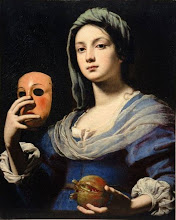 |
| Roman Altar of Peace |
In ancient Roman art, divine figures were often depicted with a veil forming an arch around them, as if billowing from a breeze emanating from their own body. This artistic device is called a velificatio, a term related to the word ‘veil’. The velificatio is also associated with rebirth and the vault of heaven.
The Kundalini energy is felt as an inner cool breeze, which not only refreshes and nourishes the subtle body, but generates a protective aura around it. Ancient Indian yoga texts use the term kosha ‘sheath’, and there is no close equivalent of the term ‘aura’.
In ancient Greek mythology, the Aurae were wind deities, who were often depicted with a velificatio, (the device spread via Greco-Buddhist Central Asia as far as Japan). 19th century spiritualists associated the velificatio with the subtle energy field they postulated, and started to use the word “aura” to refer to this emanation.
Shri Mataji Nirmala Devi has recommended the use of a bandhan, before and after meditation, as a protection. The bandhan is a movement of the right hand in an arch over the body, seven times, once for each of the auras generated by the seven chakras awakened by the Kundalini. It should be performed with the power of the attention, which is purified and strengthened by the Kundalini, the Cool Breeze.
 |
| After Louis F Elle the Younger, portrait of a lady as Iris, the messenger goddess, source: Wikipedia |



















